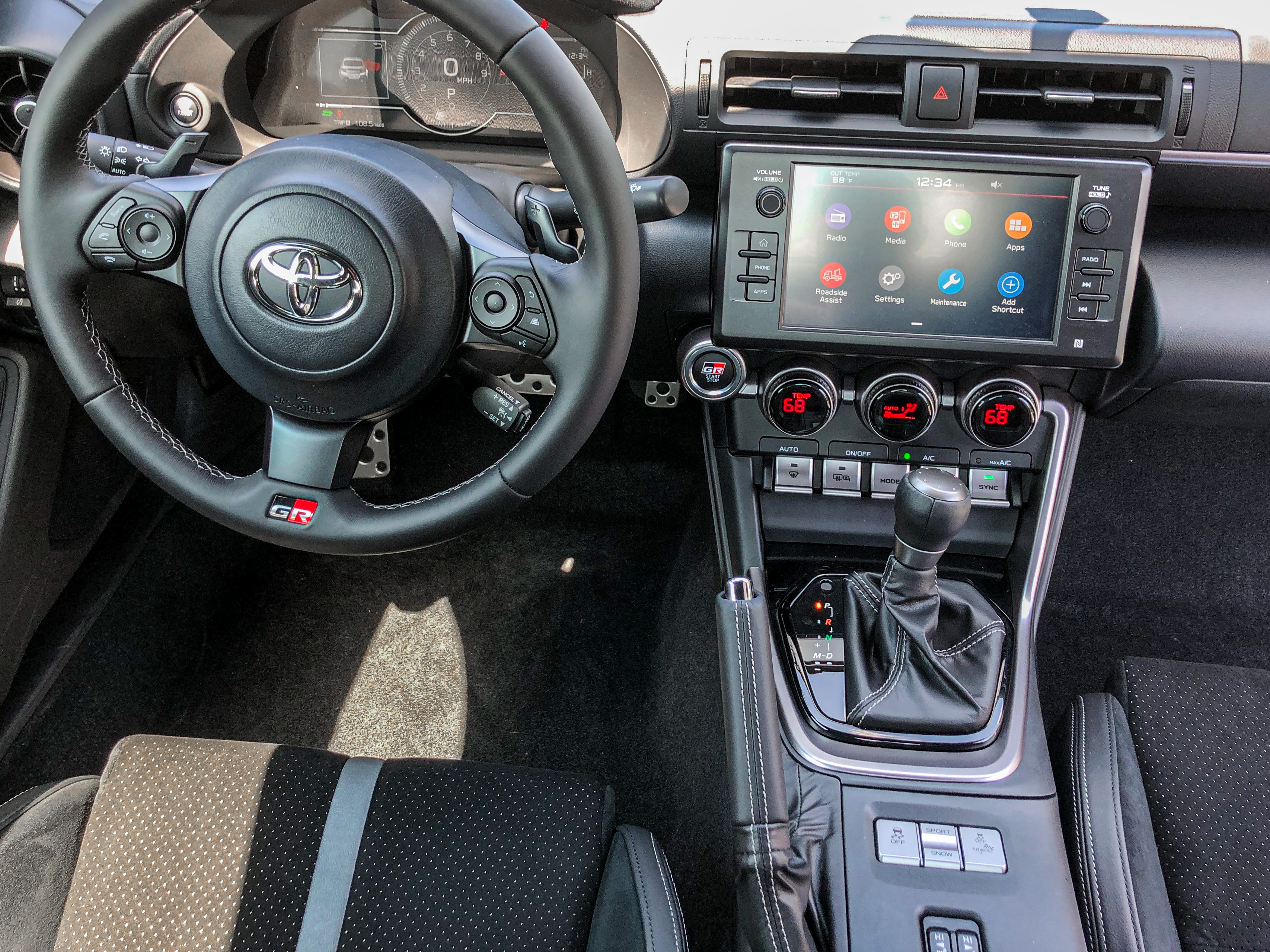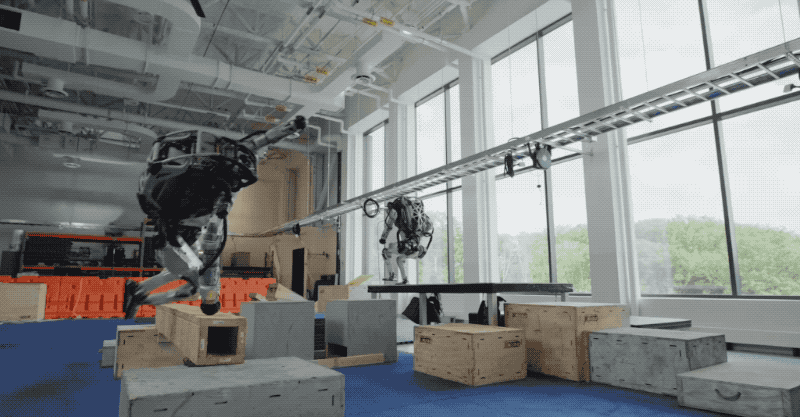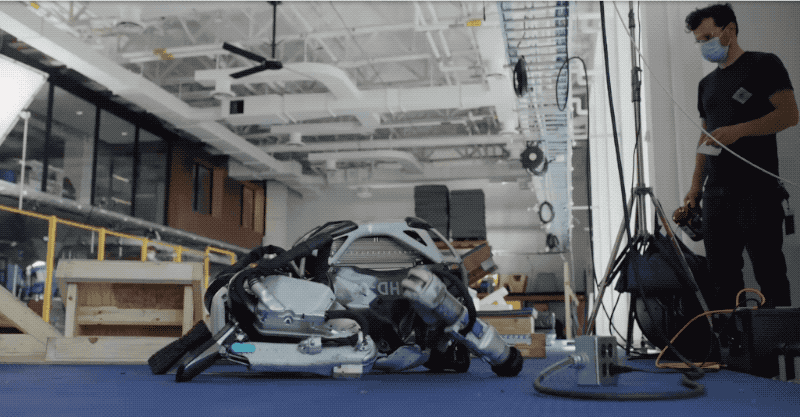- August 17, 2021
- by:
- in: Blog
Alex Kalogiannis Contributor Share on Twitter Automotive writer, editor and host for hire. Bylines: Gear Patrol, DriveTribe, Forbes, Others. The sports car market can seem like an exclusive club, one reserved for those with enough extra cash and garage space to make such a highly impractical passion purchase. More often than not, these prestige items
Alex Kalogiannis
Contributor
Automotive writer, editor and host for hire. Bylines: Gear Patrol, DriveTribe, Forbes, Others.
The sports car market can seem like an exclusive club, one reserved for those with enough extra cash and garage space to make such a highly impractical passion purchase.
More often than not, these prestige items are billed with intimidating power numbers and equally frightening price tags, both tacitly challenging would-be buyers — Can you handle me? Can you even afford me?
The Daft Punk-ian “harder better faster stronger” mantra of the sports car industry is great for those with deep enough pockets to participate or for those who enjoy cheering from the sidelines, but anyone looking to get in on the action on the ground floor these days would be hard-pressed to find a sub-$30,000 performance-specific ride that isn’t the Mazda Miata.
The misnomer too that “performance” refers exclusively to the high-speed, high-horsepower machines is enough to scare away the inexperienced or drive off those who just don’t need that. Hello again, Miata.
It’s why the Introduction of the first-generation Toyota GT 86 (née Scion FR-S) was an important one and why its next iteration, the GR 86, is an exciting prospect: Performance for the people; a sports car for everyone.
Nuts and bolts
The GR 86 is a 2+2 coupe powered by a 2.4-liter flat four-cylinder boxer engine that produces 228 horsepower and 184 pound-feet of torque.
If you’re unfamiliar with this configuration, it’s a layout that delivers more balance than the Vs-and-straights that you may be used to. Power is sent to the rear wheels by way of a six-speed transmission, manual or automatic.
It rides on an independent suspension with MacPherson-type struts at the front and multilink setup in the rear. Depending on the trim level, the GR 86 is saddled with 17- or 18-inch wheels.
Speaking of trims, the GR 86 comes in two flavors: base and premium, with the latter bringing a handful of upgrades such as the aforementioned 18-inch wheels, a duckbill rear spoiler, adaptive front LED headlamps, a smattering of visual accents, plus an upgrade to eight stereo speakers from the standard six.
All trims come with an 8-inch touchscreen display for entertainment and connectivity purposes, as well as a host of standard safety equipment that includes seven airbags and the Toyota Star safety system that’s made up of the stability control, anti-lock braking systems we’ve come to expect, plus brake assist and brake-force distribution.
GR 86s fitted with the automatic gearbox have the added benefit of an active safety system that handles pre-collision braking, lane-keep assist and adaptive cruise control.
Connected services requiring a subscription give the GR 86 remote connect abilities via an app that can start the engine, lock the doors and honk the horn, but can also provide vehicle health reports and set up what are essentially parental controls for the car: geofencing, speed alerts and even a curfew setting.
Race-bred tech
A keep-it-simple sports car like the GR 86 lacks the luxury luster of a tech-laden Lamborghini Huracán or its close cousin, the Audi R8.
While these cars have more hardware than a gaming PC, the GR 86 is light on computational muscle. Indeed, branded as a “purist’s sports car,” it’s scant on too many assists when it comes to spirited driving sessions.
Stability can be switched off and drive modes “Sport” and “Track” will increase input response on the brakes and throttle. These modes will also make the automatic gearbox punchier in kind to the more aggressive engine mapping.
With the GR 86 being such a small package, finding the tech that makes a difference requires some keen scrutiny in specific areas. Toyota states the car earns its “GR” (for Gazoo Racing, Toyota’s motorsport branch) branding through the car being developed with race-bred technology.
On the outside, this is notable in the aerodynamic touches that make big differences in stability. It starts at the front where functional vents channel air at high speeds to aid in the car’s control and is continued at the rear, where the molding above the rear wheel well is shaped to continue this work at the back end.
Structurally, the GR 86 is improved over the previous version by increasing the frame’s rigidity, implementing reinforcement in key areas in the front and rear, as well as using more high-strength steel.
Interestingly, the car manages to gain a few pounds over the outgoing model, from 77 to 117 pounds depending on the transmission. A number of weight-saving measures such as an aluminum roof and fenders mitigate this. However, the efforts were more to carefully distribute weight than shed the pounds.
Strapped in
From behind the wheel of the GR 86, it’s clear to see the interior as an upgrade more than a drastic change. Gone is the analog gauge cluster in favor of a 7-inch TFT digital screen that changes depending on drive mode.
For the 86s fitted with an automatic, there are three distinct screens that shift the visible information around for optimal usage and two in the manual.
For instance, the “normal” screen will have the miles-per-hour stat front and center, while the “track” screen will put the current gear at the top, above a three-color rpm indicator. This is useful for those who will take the Toyota out on a closed course since this is more critical info to know “in the moment” over the current speed. Bumping this up and giving the interface a distinct amber glow helps deliver that data with either a quick glance or even just through the driver’s periphery.

Image Credits: Alex Kalogianni
The infotainment screen is also slightly upgraded. Visually speaking, it looks better integrated and free of the piano black plastic bezel that mars the older one.
The interface is simple, with icons giving access to the radio, media sources, maintenance data and to call roadside assistance, as well as other integrated apps that may be installed, such as a music streaming services.
Apps can be arranged to preference but overall, it’s reliant on external devices to be truly functional. For the hyperconnected audience that this car is targeted for, there’s a sense that Toyota’s betting on most users to primarily utilize Android Auto and Apple CarPlay, which is compatible on all models.
Performance playground
Heading onto the track with the GR 86 feels like returning a captive creature back to its native environment. Toyota brought the GR 86 and its predecessor for testing and back-to-back comparison to Monticello Motor Club, a 4.1-mile course with 20 turns to pit against the car’s performance. Though the GR 86 is very much a street car, it’s on the track where it can run wild and fully express its capabilities.
The power output of the previous car was a divisive issue, with fans feeling it right-sized for the intent of the vehicle while others found it lacking and hoped that Toyota would finally affix it with the turbocharger they felt it deserved.
The improvements to the GT 86’s boxer engine are palpable and should satisfy both camps.
The increased displacement and other enhancements does indeed up the power slightly and does so without adding a turbo, keeping things simple and uniform, particularly to application of the power.
More importantly, the power is usable earlier in the rev band, so the GR 86 gets up to speed with more immediacy. In comparison, the heavier GR 86 feels lighter while the outgoing car feels like it’s dragging a load of bricks.
All of the weight balancing and suspension refinement has given the car an increasing amount of control. One of the defining attributes to the older 86 was how it felt incredibly planted to the ground.
It was difficult to push the car beyond its limits and that was encouraging to drivers old and new to drive without worry that it would go out of sorts beneath them. This still holds true in the GR 86 but the sharper agility takes some adjustment.
It feels like playing your favorite video game and then upping the controller settings way higher than you’re used to. After getting a handle on it and combined with the rebalanced power output, the GR 86 can glide around corners in a wonderfully rewarding manner.

Image Credits: Alex Kalogianni
Steering and throttle may respond to a light touch, but when it comes to the brakes, it’s a different story. The otherwise lithe GT 86 demands a heavy foot when it comes to slowing or stopping to any significant degree. It’s not just for deep high-speed braking, either, but even in usual instances of a quick speed adjustment, stepping on the brakes elicits the same incredulity as pushing through a door that wasn’t as light as it appeared to be.
Between the different transmissions, it boils down to preference, either for the track or the streets.
The manual is slick and light, if a little loose-feeling. Like the car’s handling, the gearbox itself has been designed for quicker movement throughout the pattern, be that forward, back and diagonal, and the tradeoff for this slippery shifter is a drop in confident gear selection. Otherwise, it’s a manual, and thus the driver is in full control, as opposed to the automatic.
In general, the automatic transmission is fine for casual to sporty driving, but go beyond that and it starts to become a system to overcome rather than to work with.
“Sport” mode handles the throttle response and gearbox behavior in the automatic-affixed GR 86s, and the difference is dramatic in practical application. Trying to drive fast in “normal,” nets drivers bursts of speed when the pedal is planted but the gearbox will hurry to return to higher gears as soon as it can, rather than staying low for the driver to maximize acceleration. Even in Sport, it’ll stay in gear for a bit longer, but will ultimately call its own shots, much to the frustration of the person behind the wheel.
Street beat
Taking a spirited drive on the street, the GR 86’s talents far outshine its shortcomings.
The transmission behavior is still intrusive with the automatic but backroad curves differ from track bends, and its boisterous acceleration and handling almost guarantee a good time no matter what the road ahead looks like.
In between the fun sessions, the Toyota feels competent. It drives better than what one would expect from a sub-$30,000 vehicle, but there’s no “wow” factor here. At worst it feels like an inexpensive commuter car with decent interior touch points, but it’s far from insufferable.
With the automatic, drivers can use its suite of driver assistance features like adaptive cruise control, which behaves with an eagerness to maintain the set speed in the face of elevation changes or when cars are detected.
Most other settings like lane departure warning are tucked away in a menu accessed through one section of the digital gauge cluster, and its usage is clumsy, particularly while on the move. When it’s activated, the detection is hit or miss, sometimes ignoring very clear and, in my case, deliberate lane deviation, only to be hyperactive on my journey back on the same road.
Contenders
At its price point, the GR 86 doesn’t have many other sports cars to compete with, apart from the obvious Mazda MX-5. They are similar in their accessibility, affordability and dynamic behavior, but they differ in mission and in attitude.
The Miata is a plucky roadster that endears itself to drivers with its playful drop-top energy. The GR 86 is just as playful, but it’s slightly more serious, without being comically so or intimidating.
Ultimately, it’s user preference and use case; I’d take the Miata on a coastal drive, but I would make the GR 86 my track toy.
Indeed, the GR 86 is only really competing against itself. In one regard, it does this as it endeavors to be better than its outgoing self, and I think most drivers will agree that it succeeds there.
In another, it does this as it goes head-to-head with the Subaru BRZ, its mechanical twin, as Toyota and Subaru famously partnered to make this and the car’s previous iterations happen. There are certain things that set the cars apart like looks and tuning, but not much else beyond that, and it will be interesting to see which way enthusiasts gravitate.
The GR 86 is an important vehicle to Toyota’s commitment to its current motorsport endeavors as well as its sports car heritage, which in turn carries a substantial cultural significance. Anyone questioning this need only look to the very top of the company’s structure. Toyota’s president Akio Toyoda is not only enthusiastic about sports cars, he’s an experienced driver and had a personal hand in the development of the GR 86. In short, the car wouldn’t move forward unless he himself was happy with it, and that degree of personal investment isn’t spent on things that are unimportant.
Being an entry point to the GR sub-brand (joining the Supra), the GR 86 gives new and experienced enthusiasts a great starting point for a performance driving journey. As drivers, the GR 86 comes with a one-year membership to the National Motor Sport Association, which includes one high performance driving event.
The 86 is also a blank slate for aftermarket tuners, who still modify and maintain cars like the Supra and even the AE86, the GR’s progenitor. At the end of the day, the GR 86 might not be the fastest or most powerful car on the road or on the track, but its accessibility in both learning curve and price point make it a winner.








